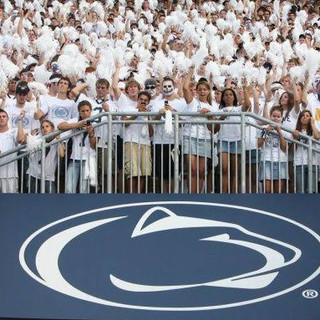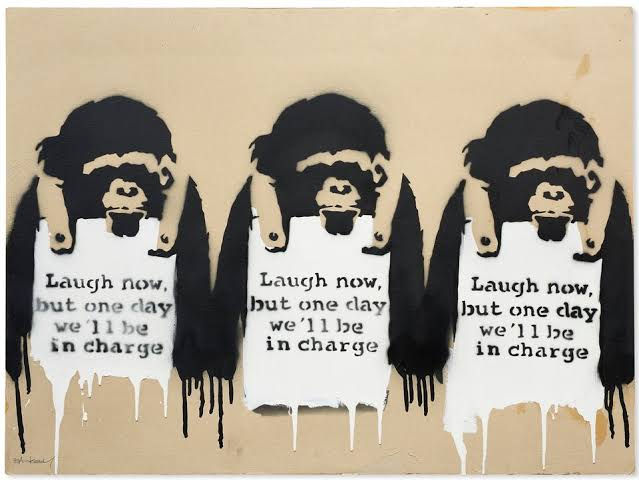US Trademark Law & College Sports team merchandise: A case study
- IP News Bulletin
- Aug 1, 2022
- 5 min read
Is it possible for collegiate and professional sports teams to have sole control over all products that bears their names and insignia under trademark law? No, it doesn't, according to the District Court for the Middle District of Pennsylvania.
A motion by Pennsylvania State University (PSU) to dismiss counterclaims brought by Vintage Brand, an online retailer, that sought to end PSU's exclusive control over the use of particular logos that identify the school and its athletic teams, was denied by the court in Pennsylvania State University v. Vintage Brand, LLC. (2022) on July 14.
The multi-billion dollar collegiate and professional sports goods sector was indeed referred to as a "home built on sand" in the court verdict.
For sport companies and merchandisers, Judge Matthew W. Brann's opinion is particularly disturbing since, in a technical sense, Brann is right.
The owners of trademarks are only given a few specific property rights under trademark law. The main goal of trademark law, consumer protection, serves as the justification for this. An associative link between consumer memories of branded products and the business firm's trademark is created when consumers are repeatedly exposed to it through advertising or packaging. This link then acts as the stimulus for triggering those memories when the consumer sees the mark in a commercial setting (like a product aisle in a shop or store).
Because of this, the modern trademark regime primarily protects a senior brand's exclusive use of its trademarks as a way to stop junior brands from using confusingly similar or appropriated marks that could confuse consumers. The justification is that consumers must be protected from being misled by junior brands using senior brands' marks into believing that the junior brand's products were made by the senior brand and are thus of the same quality as the senior brand's products.
Due to customer misunderstanding about the origin of the manufactured goods, a proving of consumer injury in the form of trademark infringement is thus necessary.
The fact that PSU and other college and professional sports teams don't frequently make sporting goods is a concern. Instead, sports organisations sign lucrative licence deals with independent producers (like Nike and Adidas), who then create the products that are marketed through team stores and other channels.
With its legal defence that the use of PSU's name and trademarks on its items is solely ornamental, Vintage Brand draws attention to this reality. Vintage Brand claims that the alleged appropriation does not lead customers to believe that PSU truly created the goods. According to Vintage Brand, there may be no trademark infringement if there isn't source misunderstanding.
Modern trademark law does not take into consideration an industry relying on independent producers that create items using an exclusive licence granted to them by trademark owners, and therein lies the difficulty. Judge Brann concurred, which is why he said that the merchandising sector is constructed on sand. Judge Brann actually only mischaracterized that industry in one way: he said it was a multibillion dollar industry rather than a multimillion dollar enterprise.
If Judge Brann's judgement is sustained on appeal, at least within the Third Circuit, it may completely alter that multibillion-dollar sector.
In Boston Professional Hockey Assn. v. Dallas Cap & Emblem Manufacturing (1975), the United States Court of Appeals for the Fifth Circuit took a quite different stance and determined that trademarks naturally identify the owner of the mark as the source or sponsor of the goods. Courts that adopt this line of thinking acknowledge that consumers buy things with trademarks on them because they have a mental association with the owners of such trademarks. For instance, this line of thinking suggests that those who buy PSU clothing do so with the knowledge that there is a connection between the merchandiser and the university. The Fifth Circuit's criterion for addressing situations in this way was described by the court in the current case as a "per se" approach.
The judge found that PSU must provide proof that Vintage Brand's use of PSU marks causes consumer confusion regarding the source of the goods. Judge Brann rejected the per se approach to identifying source confusion. "Whether consumers believe that a university is the source, sponsor, or authorizer of items bearing its marks should—minimally—turn on just that: what customers believe," the court stated.
In order to achieve this, PSU will probably carry out survey research akin to that which was carried out in Indianapolis Colts v. Metro. Baltimore Football (1994). (Indianapolis Colts). Judge Posner found customer confusion regarding items made by a Canadian Football League (CFL) team that used a similar team name in that case based on consumer survey data compiled by the Indianapolis Colts of the National Football League (NFL) (CFL Colts). Judge Posner specifically found that the survey results showed that enough buyers were misinformed to believe that the NFL team supported or created the CFL team's merchandise.
The results of cases like Indianapolis Colts (1994) that used consumer survey data to identify consumer bewilderment rates above 50% were recognised by Judge Brann in the current case.
The court made note of the prevalent consumer misconception that products containing a person's or organization's name are only allowed if the trademark owner has granted authorization in advance. The court then pointed out the situation's circularity, noting that consumers base their beliefs on a false legal presumption that sustains claims of trademark infringement in surveys.
Judge Brann requested from the parties evidence that provides answers to many questions in order to resolve that circularity. What proportion of customers are initially perplexed about the origin of Vintage Brand's products? Do consumer perceptions change depending on whether the appropriated trademark is a name or a logo?
Last but not least, does customer belief originate from the perception that PSU is the real supplier or sponsor of the goods, or is it based on a misinterpretation of the applicable trademark law?
The third and last question is the one that sport brands and merchandisers should be most concerned about. There is a very significant chance that consumer responses to survey questions would reveal an inaccurate expectation of legal protection, according to Judge Brann.
However, there is another way to approach customer expectations that, in theory, should address any trademark inquiry. What if market facts are construed to satisfy customer expectations? Because it seems reasonable, consumers could assume that trademarks will be protected.
The market has conditioned us (consumers) to believe that trademark law gives brands adequate legal protection to thwart unauthorised third-party use of other people's trademarks. Even if they are wrong, customer expectations may make more sense in this situation than current trademark law.
Going ahead, PSU will have to submit material in the form of evidence to the court that satisfies Judge Brann's three inquiries. On appeal, however, there is still a very strong chance that the Third Circuit may overturn Judge Brann's ruling and its justification. The issue for PSU is that the Third Circuit will have a hard time identifying clear mistake in Judge Brann's reasoning because the standard for reversal is clear error.
Technicalities must eventually yield to market realities, which take precedence. The fact is that in order for the present product business to operate as it does, trademarks must be protected by property rights that allow brands to licence usage to third parties and bar unauthorised use by others. Or, to put it another way, trademark owners should have the legal authority to decide who can create goods with their marks. Giving consumers that option enables brands to manage for quality through the choice of producers, which not only satisfies consumer expectations.












Comments